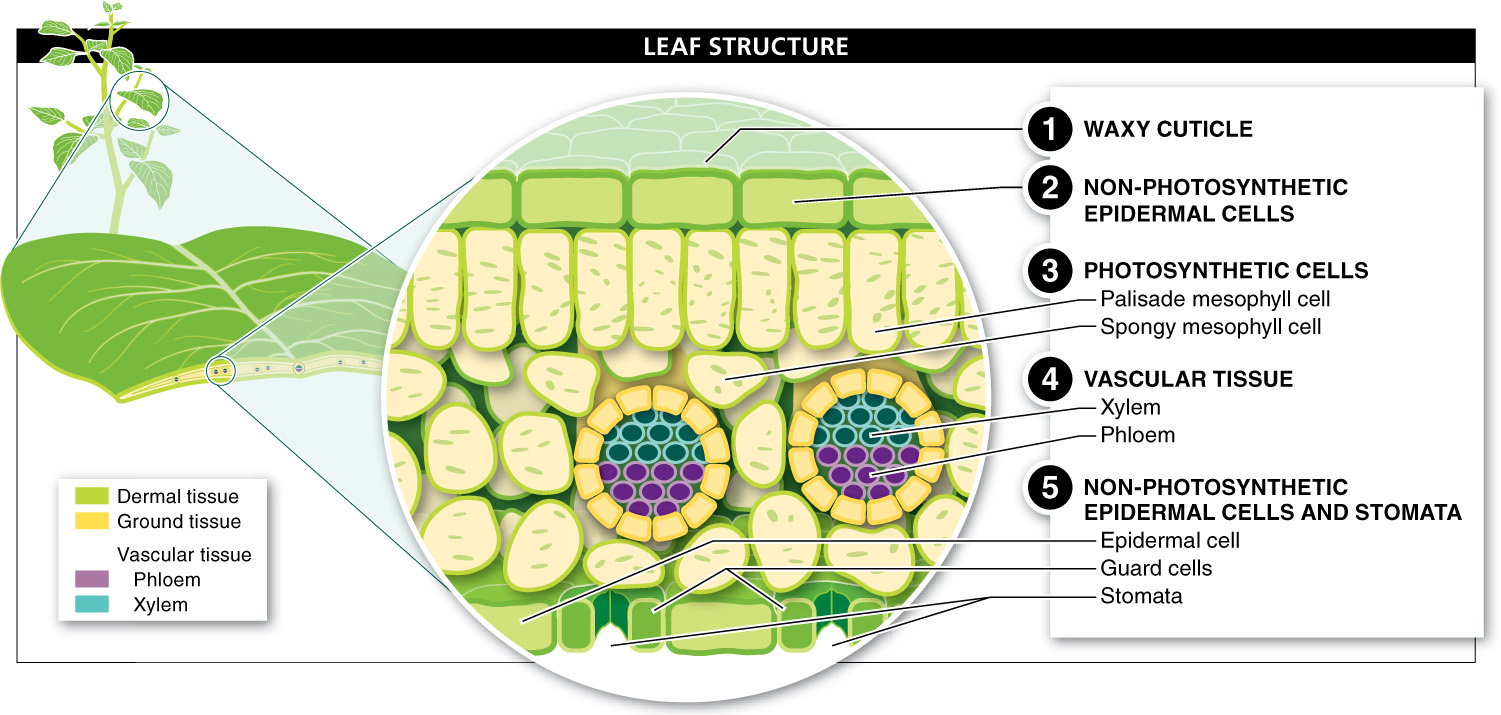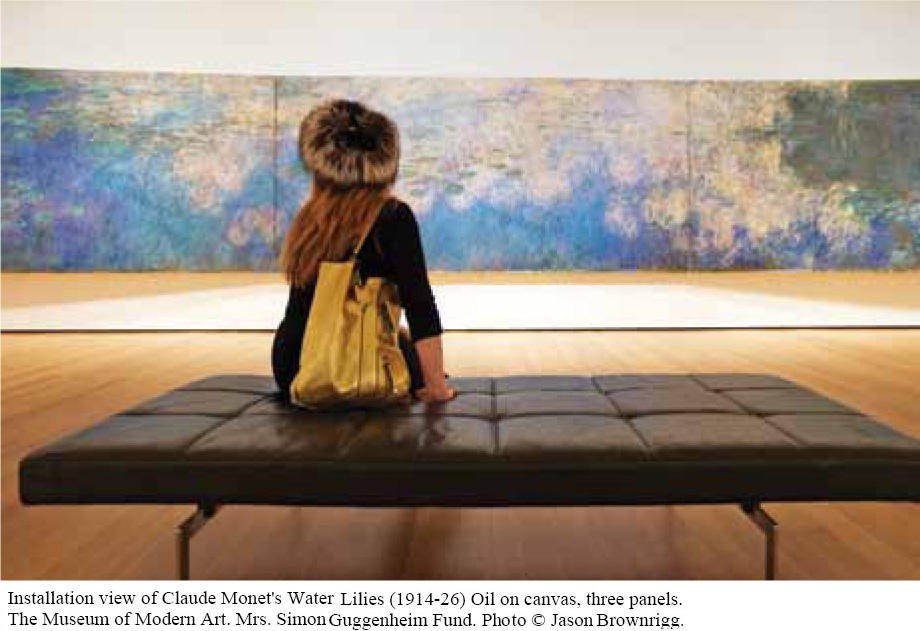One of the recurring themes in comparing plants and animals is that plants must acquire energy and nutrients without being able to move. Leaves solve this problem handily. They have one primary purpose—
The arrangement of cells inside the leaf clearly serves the purpose of capturing the energy of sunlight to make sugar and then efficiently transporting that food out of the leaf to the rest of the plant. Starting at the upper surface and moving inward, let’s examine the leaf’s layered structure (FIGURE 17-16).

- 1. A waxy cuticle on the upper surface protects the leaf from damage and reduces the rate at which water evaporates from the leaf in the hot sun.
- 2. The epidermis, the cells forming the upper surface, are non-
photosynthetic and protective; they secret the cuticle. - 3. Below the epidermis are a few layers of photosynthetic cells. The cells in the first layer, called the palisade mesophyll, are closely packed parenchyma cells, rich in chloroplasts. Rates of photosynthesis are highest in this part of the leaf. In the next layer or two, parenchyma cells are irregularly shaped and more loosely arranged, forming numerous air pockets that make the layers somewhat spongy—
hence this portion of the leaf is called spongy mesophyll. Surrounded by air pockets, most of the cells in the spongy layer are in contact with the air surrounding the leaf, enhancing the diffusion of gases, including the CO2 essential to photosynthesis, from the air and into the plant’s photosynthetic cells. - 4. Veins run through the middle of the leaf. Leaf veins are composed of vascular tissue, xylem and phloem. Much like the veins, arteries, and capillaries in humans, they reach out to all the cells to deliver water and essential minerals and haul away the sugar products of photosynthesis for use elsewhere in the plant.
- 5. Like the top of the leaf, the bottom layer is composed of non-
photosynthetic epidermal cells. Interspersed among these cells are stomata (see Section 17- 3 ), the pore-like openings through which the plant takes in CO2 and releases O2, one of the by- products of photosynthesis.
700
701
Leaves come in a huge number of shapes, but nearly all leaves are very, very thin. Why?
Nearly all leaves are thin blades attached to a stem by a small stalk, but they vary tremendously in appearance (FIGURE 17-17). A plant can have a small number of huge leaves. Water lily leaves, for example, can reach almost 7 feet across and inspired Monet’s mural-


Among the flowering plants, many monocots can be identified by their long, flat leaves that are oriented vertically, as in the grasses, in a pattern that keeps them from shading each other. Eudicot leaves come in two types: simple leaves, each with just a single undivided blade, and compound leaves, having a number of leaflets attached to a central support structure. Each of these two types can vary greatly, from sharp-
Perhaps the most extremely modified plant leaves are the hard, dry spines of most cacti. The spines don’t contribute to photosynthesis—
TAKE-HOME MESSAGE 17.6
In leaves, plants convert the potential energy of sunlight into the usable chemical energy of sugar. Leaves are thin and have a layered structure that enables them to effectively capture energy and transport water and nutrients. The vascular tissue of leaves carries out food to the rest of the plant, and carries in water and minerals.
Describe the three layers of a leaf.
The outer, non-photosynthetic layer of a leaf is the epidermis, which protects the leaf, reduces water loss, and regulates gas exchange. Beneath the epidermis are layers of photosynthetic cells, where sugar is produced. Veins of vascular tissue run through this middle layer, delivering water and minerals to the leaves and transporting sugars from the leaves for use elsewhere.